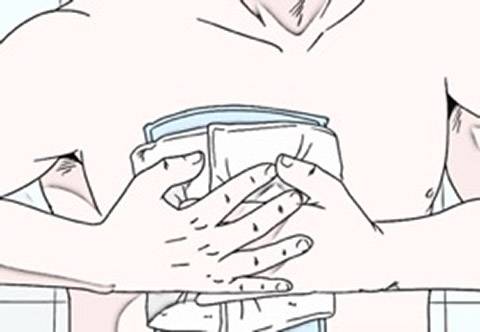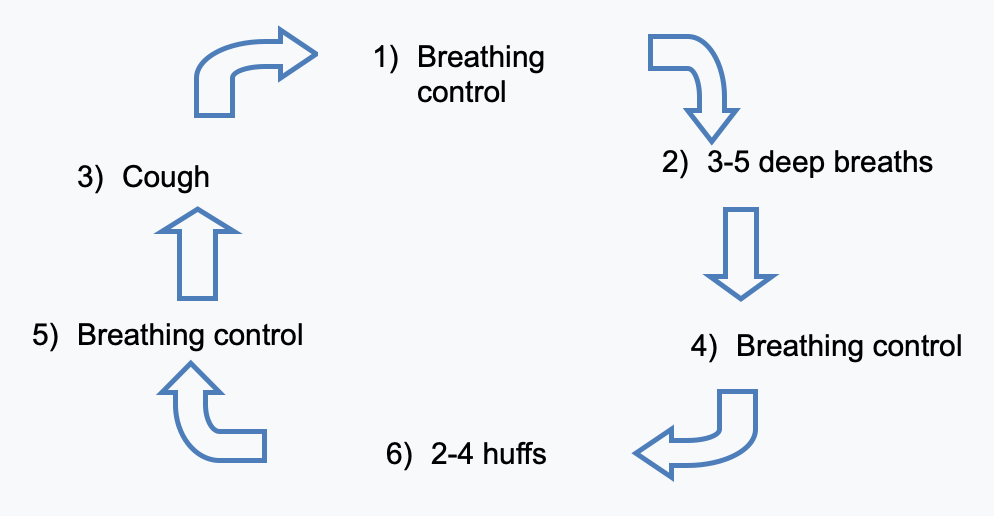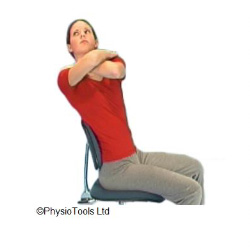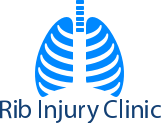Physical Therapy & Rehabilitation
Together with painkillers, the usual approach to an acute injury or acute exacerbation of a chronic injury with inflammation is often referred to as R.I.C.E. The R.I.C.E. approach should be implemented during the first 72 hours (3 days) following all acute musculoskeletal injuries.
This approach can at least in part be applied to chest wall injuries but with some important considerations:
Rest – Avoidance of activity or activities that increase pain. With chest wall injuries, deep breathing or coughing may exacerbate the pain but need to continue to avoid developing lung issues.
Ice - Apply ice (ideally in a bag) or ice pack to injured area immediately and regularly for several days to reduce pain and local inflammation (bruising).
Compression – A contentious issue in the early treatment of a chest wall injury due to concerns that by wrapping the chest in a bandage, corset or rib strap it may exacerbate breathing issues. There is still role for rib strapping following chest wall injury but only with specialist supervision.
Techniques of how the injured chest area can be 'supported' particularly when moving from sitting or standing position or coughing can be taught.

Discomfort may be reduced by using a folded towel or pillow to support your chest while coughing.
Elevation – Has no role following a chest wall injury
In addition, after a few days once the acute pain begins to settle the use of heat (a compress or pad) can help alleviate some of the pain of a chest wall injury and provide relief.
Following the acute immediate injury, there is a role using physical therapy techniques to aid recovery.
Gentle range of movement exercises
Following a chest wall injury, it is important to start gently moving, as comfort allows, as soon as possible. Even a bruised rib can take up to 8-12 weeks to fully heal, therefore, it is important that you gradually build up your general exercise in this period. Following a physiotherapy assessment, you will be given guidance regarding specific exercises to aid your recovery. Fear of movement and protective postures can cause muscle imbalance around your thoracic spine and chest, meaning that pain persists for a longer period than the injury takes to heal. Therefore, early mobilisation is recommended to promote spinal mobility and prevent persistent pain.
Breathing exercises
Important to avoid the complications of rib injury, including chest infection. Physical therapy breathing exercises may be combined with a spirometer, a device that measures the volume of air you breathe in and out. This will give you a better idea of how it should feel to take a full, deep breath. We often utilise a technique called The Active Cycle of Breathing to encourage deeper breaths and an effective cough, which is important to allow you to clear any sputum from your chest, either in the early stages following an operation or injury.
Active Cycle of Breathing Technique (ACBT)
What is it?
ACBT is a technique to help clear sections from your chest. Pain and fatigue can sometimes limit the strength of your cough. The ACBT uses different types of breathing to make it easier for you to clear the secretions from your lungs towards your main airway (the trachea).

What do I do?
ACBT is split up into 4 sections:
- Relaxed breathing/breathing control
This is normal, gentle breathing. Place one hand on your abdomen so you can feel it rise and fall. - Deep breathing
Breathe in deeply feeling your lower chest expand as far as possible. Try to keep your neck and shoulders relaxed. Hold the breath up to 3 seconds, and then let the breath out gently - Huff
This is a short, sharp breath through an open mouth to force the secretions out. Imagine you are steaming up a mirror. - Cough
Only cough if you feel the secretions are ready to be cleared
How long?
Complete for about 10 minutes, or until your chest feels clear OR until you are tired.
If you have an infection you will need to do the cycle several times a day. Three deep breaths every half hour is a good way to check for sections and improve ventilation.
Thoracic mobilisation
Following a rib or chest injury, the mid spine region can become stiff due to pain and tightness in the chest region. Thoracic mobility with rotations and extensions can help avoid these issues and should be part of your exercise rehabilitation regime once the acute pain has settled.

Lateral twists to aid thoracic stiffness developing after a rib injury
Manual therapy
If you have pain or stiffness which does not fully settle with range of movement and breathing exercises your physiotherapist may use manual therapy techniques to help relieve pain and enable you to further progress with your rehabilitation programme. There are many different types of manual therapy and the type of treatment utilised will be based on the assessment findings, which your physiotherapist should discuss with you. The evidence has indicated that manual therapy has a neurophysiological effect, which reduces pain. Research has also shown that to gain long term effects from manual therapy, it must be used in conjunction with a targeted exercise programme.
Strengthening exercises
Once recovered from the acute rib or chest injury, introduction of strengthening exercises to allow rehabilitation and maintenance of a strong back, shoulders and upper chest means less risk of neck, shoulder and back injuries during activity, as well as maintaining good posture so avoiding problems in later life.
Strengthening is especially important if you are returning to sport, and in addition to gym-based work, you will need to complete sport specific exercise drills. This will not only help prevent further injury, but also maximise performance and confidence when returning to play.

